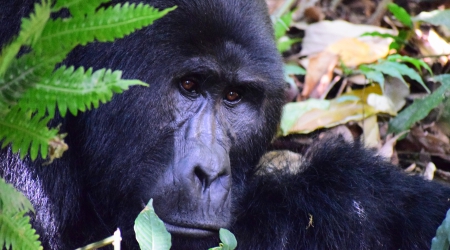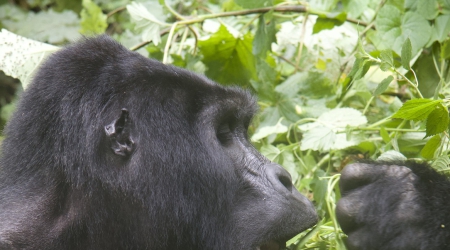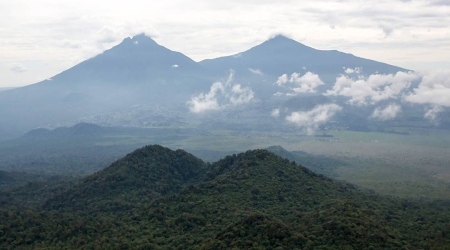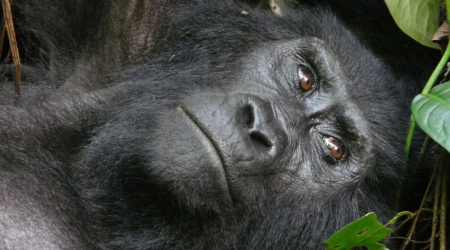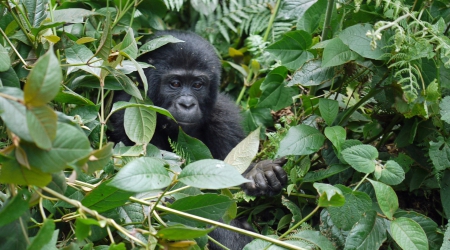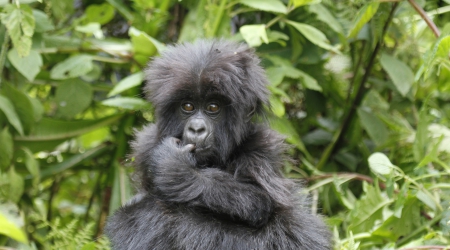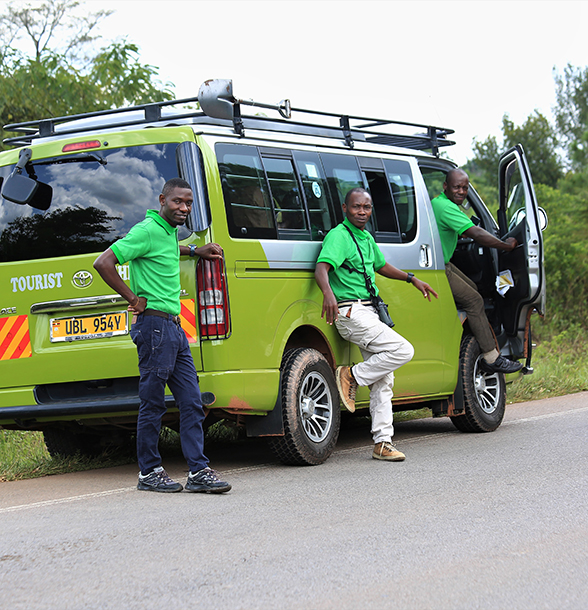Gorillas are gentle giants that are located in the tropical forests of Africa. They share 98% of blood DNA with humans hence called our close relatives. They are of different species that are divided into subspecies and these live in groups called families. Each family is headed by an alpha male called the silverback. The lowland and mountain gorillas are the most visited gorilla subspecies that are mostly visited.
These two subspecies are located in Kahuzi-Biega national park for the lowland gorillas and Virunga Conservation Area (Volcanoes national park, Virunga national park and Mgahinga national park. Bwindi National Park are on the Slopes of the Virunga mountain ranges). The main activity that is carried out is gorilla trekking where visitors have introduced to the presence of a trekked gorilla family for an hour as they learn about the behaviors.
Trekking the endangered mountain gorillas requires one to be physically fit since it requires hiking and walking long distances. This calls for training and physical exercises like jogging, gyming, walking long distances and much more. The trails used are slippery and muddy which calls for one to be physically stable to keep firm and use walking sticks. Tourists or trekkers that first take physical training and body exercise normally enjoy the gorilla trekking experience.
No one can predict the nature since some gorilla families are located near the park offices where briefing and track start and some are very far. This means that you can be allocated to a nearer gorilla family and find that it has moved far and distant area which calls for having the strength and physical ability to conquer your target of visiting gorillas. Let’s look at some of the physical exercises and training you can take part in;
Walking can take place days or weeks before the day of training and this can be either in a home country or in the country visited to take a gorilla tour. In the home country, you can take a community walk where you will explore the indigenous people’s way of life, take a nature walk in a national park and much more. Opt to walk to the market or shop in your home country and this will be of great advantage on your gorilla trekking safari to Africa.
Long hikes such as hiking Rwenzori Mountains, Mount Sabyinyo, Mount Kilimanjaro and much more or any heal around you. Those in Kibale National Park who are heading to Mgahinga or Bwindi National Parks are advised to take a top-of-the-world hiking experience that is organized by Isunga cultural community Tours at the edge of Kibale National park. As you enjoy the craters, community and forests plus tea estates are preparing for the gorilla trekking adventure.
Stretching helps to lubricate the joints and this helps in stretching when crossing the water bodies during gorilla trekking. Let your muscles relax and be flexible during stretching to make your gorilla trekking less tiresome without muscle pulls, and fewer risks of heart attack and blood pressure. This is achieved by having a train or taking a jogging class before the gorilla trekking exercise.
You also need to know that; no tourist is allowed to take a trekking experience if he or she is sick health wise mostly with easily spread diseases like flu, cough, diarrhea and much more. Tourists are advised to book their gorilla trekking permits as early as at least 2 months before the day of trekking since the permits are limited and highly demanded, have enough drinking water to quench your thirst since you will walk long distances and always follow the rules and regulations to make your experience lovable and memorable.
Physical exercise is very important for anyone taking a gorilla trekking adventure in Uganda, Rwanda and the Democratic Republic of Congo and this will ease your trekking experience with great memories.




